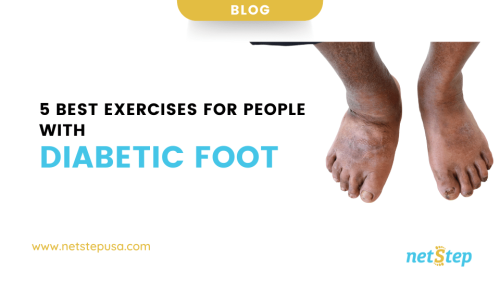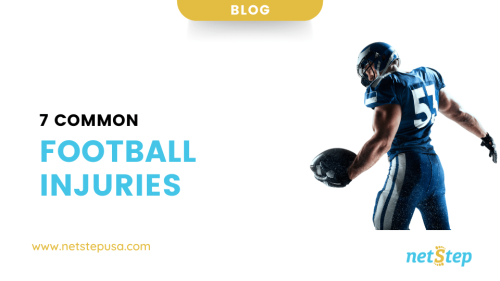
5 Best Exercises for People with Diabetic Foot
Exercise is associated with many health advantages for diabetic foot. Not only can it reduce the amount of stress you feel, but it also can
Get $100 for your second pair
The name “stone bruise” may sound intriguing, but it’s not as cool when you really think about what causes these injuries. A stone bruise happens because sometimes we step down hard on small objects like stones and pebbles.
And suppose your weight is balanced poorly enough while standing in one place for an extended period; this can be harmful too. It might even cause pain throughout all body parts due to the body’s imbalance between muscles inside and outside.
So, what is a stone bruise, and what can you do about it? While it’s not always possible to prevent a stone bruise, there are some things you can do to help reduce the chances of developing one and speed up the healing process if you get one. Keep reading to learn more.
Some people are more prone than others to developing a stone bruise or to experiencing pain that is more severe or persistent.
Athletes are prone to having stone bruises, but this injury is more likely to occur in any physical activity involving repeated, forceful foot strikes from running or jumping. Because frequent running can lead to pain and injury, we constantly emphasize the importance of adequate conditioning.
However, the likelihood of stone bruising can be increased by additional internal and intrinsic causes. The distribution of weight and forces across each foot can be altered by structural abnormalities like flat feet or high arches, which can result in extra pressure and an increased risk of injuries in specific locations.
Other factors to consider include:
Degenerative illnesses like diabetes or rheumatoid arthritis, as well as toe abnormalities like bunions, can all impact the foot’s structure, making it more vulnerable to stone bruises and other related injuries.
This can include high heels that put too much pressure on the front of the foot or athletic shoes whose supporting qualities have worn out.
As you age, there appears to be less of a protective fat pad at the bottom of the foot.
With extra weight, the feet are subjected to greater pressure with each step.
The self-diagnosis of a stone bruise is usually relatively safe, especially if the incident that caused it is remembered. Nonetheless, a stone bruise can be confused with other more severe conditions, including the following:
If the pain is severe or if you routinely have stone bruises and the pain does not lessen with rest and care, you should always get your foot checked out by a skilled podiatrist to ensure there is nothing wrong with your foot that requires specialized treatment. You should also check for any redness, swelling, or discomfort.
What is a stone bruise, and what can you do about it? RICE, or rest, ice, compression, and elevation, is a simple treatment that works well for stone bruises in most situations. Within a week, the pain and swelling are likely to lessen.
But it’s time to call the doctor if the pain doesn’t go away or just keeps happening. Maybe your stone bruise is something else, like stress fractures along the bone, and not a stone bruise. Rest will also be necessary for this condition, although another strategy might also be required.
A change or solution is required if you consistently get stone bruising or other foot and heel pain. Custom orthotics may be advised to offer precise cushioning and support where needed, eliminating extra stress where it shouldn’t be if the foot has an underlying structural issue. Modifications to one’s training regimen or footwear may be part of such therapy strategies.
Stone bruises are common among people who don’t give their feet and ankles enough support and engage in activities that stress their lower limbs, such as running on rough, uneven terrain. For anyone who commonly experiences stone bruises or other foot-related ailments, insoles are a godsend because they are made to give extra cushioning and support to your feet.
Custom insoles are available in a range of different thicknesses and styles, but they all work to:
What is a stone bruise, and what can you do about it? If it feels like you’re treading on a rock, and the pain is concentrated in the ball of your foot or pad of your heel, you might have a stone bruise. You may also have other conditions like metatarsalgia, plantar fasciitis, heel spur, stress fracture, or Morton’s neuroma.
If you are feeling this pain, you should try to get off your feet and keep the affected foot elevated as much as possible. If the pain intensity does not reduce after a few days, you should make an appointment with your primary care physician for a complete diagnosis, which may include an X-ray.
Stone bruises can be a nuisance, but they don’t have to keep you from living your life. You can continue dancing, running, and jumping without worry with the proper treatment and prevention methods.
NetStep™ has the perfect solution for you. Our insoles are designed to help prevent stone bruises and speed up healing time if you suffer from one. With NetStep™, you can get custom orthotics to make your life easier. The first step is answering a short questionnaire that assesses each patient’s needs, so they receive only those insoles explicitly designed for their feet!
Don’t let a stone bruise hold you back; take every step with NetStep™. Enjoy every step with high-quality and comfy custom insoles because it’s time you stop struggling through your day without feeling discomfort or pain to do what needs doing – moving around comfortably.

At NetStep™, we pride ourselves on being the leading orthotics provider in the world. We offer a wide range of products to meet the needs of all our customers, and our team of experts is always on hand to provide advice and support. Get the best possible care for your feet today.

Exercise is associated with many health advantages for diabetic foot. Not only can it reduce the amount of stress you feel, but it also can

Football is a high-speed and high-energy activity hence players frequently suffer football injuries. Whether you play football yourself or have a youngster who is obsessed
